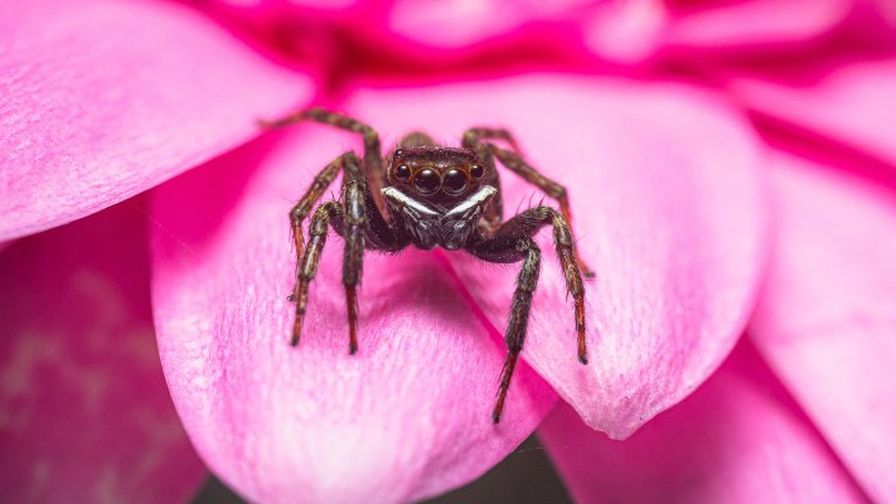
Spider on pink petals | WUR
The use of natural enemies (beetles, dragonflies, spiders, etc.) as biological control agents have been around for decades, employed by growers as a tactic to combat persistent and returning pests. However, adaptation and resistance, among other reasons, have caused their use to be less effective over the years. Another big concern is when growers are treating a plant that isn’t suitable for the application of natural enemies.
This problem is the main focal point of the current Biological Control 2.0 project being tackled by the Greenhouse Horticulture and Flower Bulbs unit of Wageningen University & Research (WUR). The team is investigating opportunities for new biological control agents and application techniques. The goal of the investigation, according to researcher Ada Leman is “To ensure that chemical corrections are kept to a minimum.”
As touched upon, the development cycles of some plants don’t afford them the opportunity for natural enemy applications. Instances that fit into this unfortunate category include when greenhouse temperatures are kept at lower temperatures, causing the deviation/malfunction of routine upon deployment, and when the crops simply don’t attract the biological control agents. One example of the former according to WUR is when “there is a thin ‘wax layer’ on the leaves or stems of the crop, making them too slippery for existing natural enemies.”
Over the next four years of the project, the business unit aims to investigate three possible solutions to these problems associated with natural enemy applications and deployment. One of the proposed solutions and research will involve testing whether or not spiders are effective against:
Additionally, the team is looking to investigate whether various natural enemies (including lacewings and predatory flies) are effective when deployed for lower-temperature crops, and whether the hair of leaves and stems can be imitated to allow for greater agent attraction.
For the first three years of the project, research will take place in labs and research greenhouses of WUR located in Bleiswijk, Netherlands. For the final year, documented solutions will be practiced and tested at commercial company facilities.
“Many pests cause financial damage to growers,” says Leman. “If there are no suitable natural enemies, it is tempting to use chemical agents. We – my collage Sophie le Hesran and I – hope that this can be limited and that we discover new natural control agents.”

